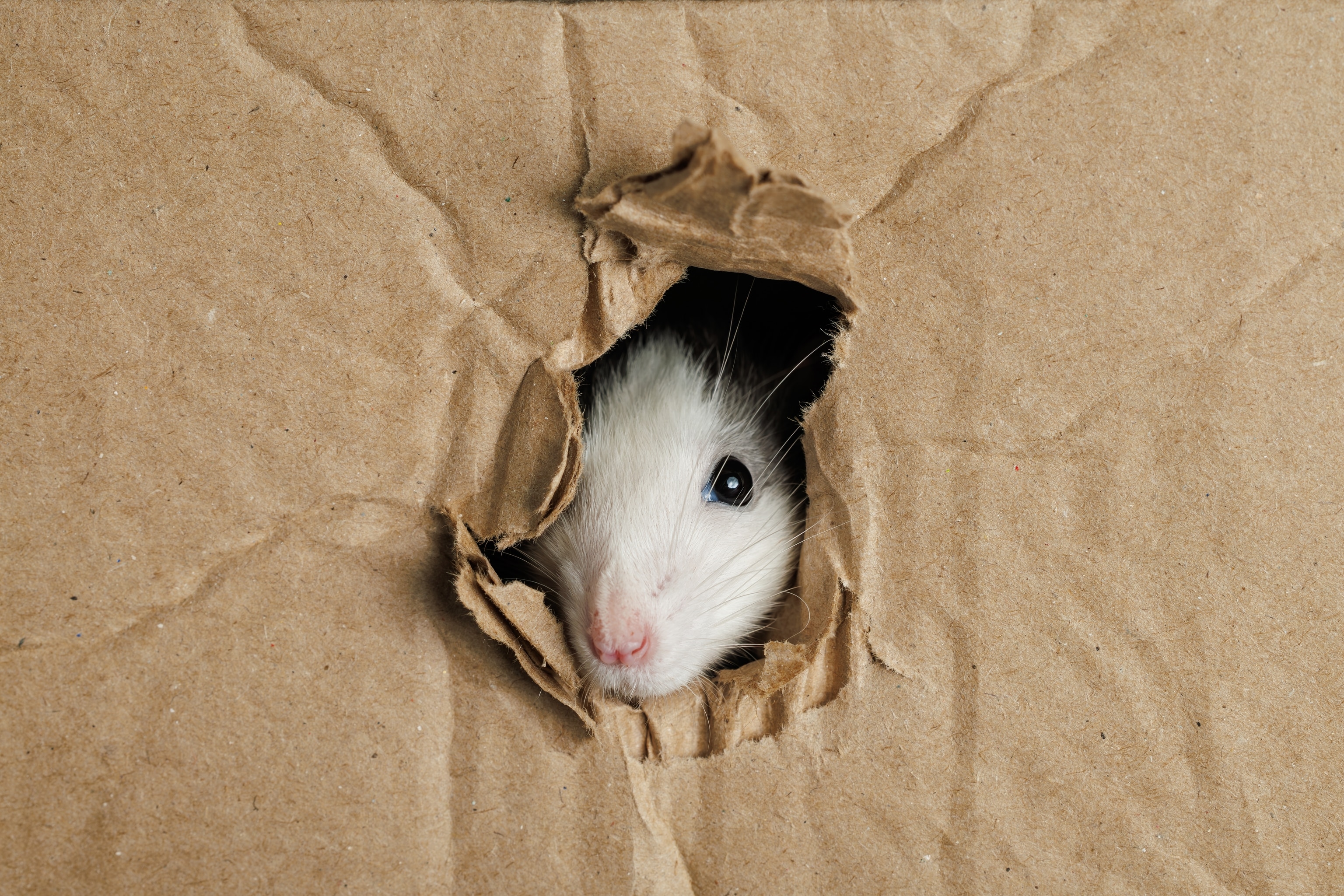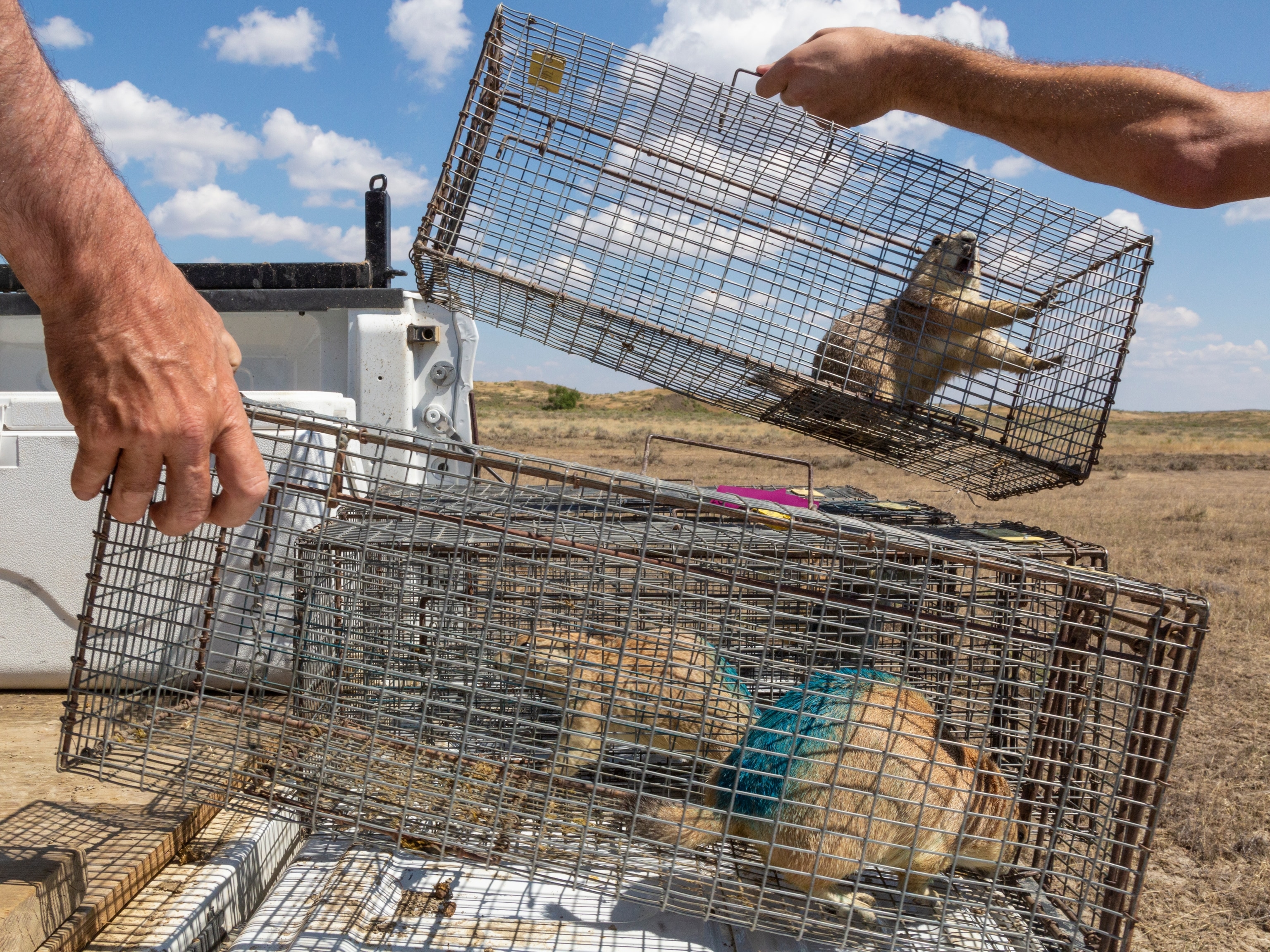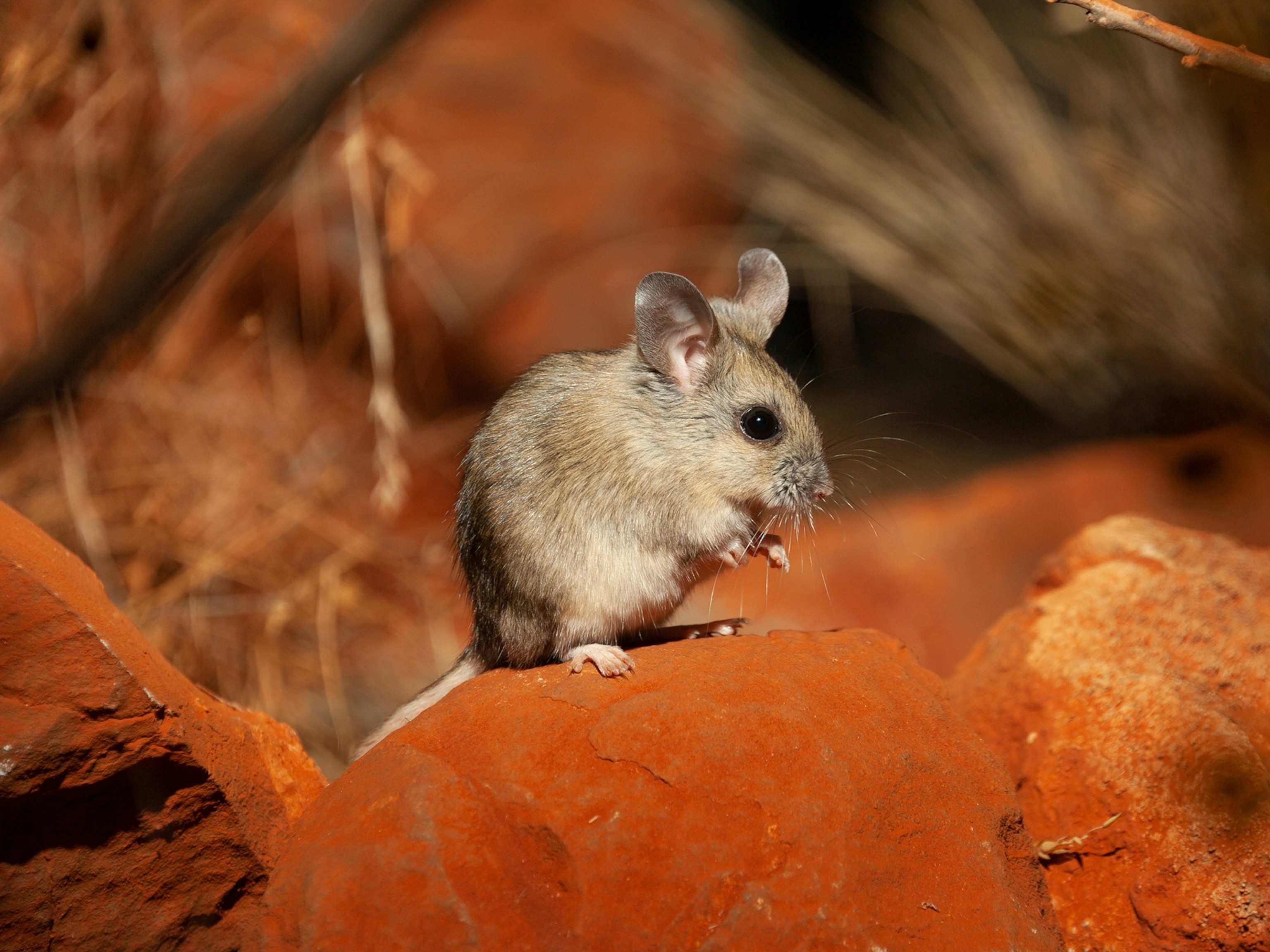Is it time to finally ban glue traps in the U.S.?
If passed, a federal act prohibiting the use of sticky traps could reduce harm to wildlife, such as snakes and birds, and relieve suffering of rodents, advocates say.

When the New Mexico Wildlife Center admitted a tiny brownish gray bird in late October, clear glue had plastered its wings and feathers to its body, making the animal barely recognizable. Still, staff were hopeful the Bewick’s wren could be saved.
But the patient didn’t make it through the night, possibly succumbing to internal injuries worsened by stress, says Laura Siegel, communications specialist for the organization based in Española, a small town north of Albuquerque.
Glue traps—small plastic boards coated with a sticky adhesive—are used worldwide to capture mice, insects, and other animals deemed as pests. However, these contraptions often unintentionally catch other wildlife. (See our best wildlife photos from 2024.)
In North America, that can include birds, snakes, small mammals, and even domestic cats, according to wildlife rescuers. It’s difficult to determine how many glue traps are sold in the United States each year, but they are widely available in hardware stores, supermarkets, and online retailers.
Although people purchase glue traps as a cheap, non-toxic alternative to rodenticides or snap traps, they cause slow, painful deaths. “I don't want to see another glue trap ever again,” Siegel says, and “neither does anybody working in our hospital. We've seen, over and over and over again, some really horrible things happening to wildlife.”
“Glue traps are one of the worst things we see in our wildlife hospital,” agrees Alison Hermance, director of communications and marketing for WildCare, a wildlife hospital in San Francisco’s Bay Area. Her facility admitted 18 animals stuck in glue traps from January to November 2024. “My dream is to see them banned everywhere.”
That’s why WildCare joined more than 125 other groups in endorsing federal legislation to ban glue traps in the United States. The Glue Trap Prohibition Act, introduced by California Congressman Ted Lieu in January 2024, is under consideration by the House Subcommittee on Conservation, Research, and Biotechnology. (Read about six important new laws helping wildlife in 2024.)
If passed, the U.S. would join countries such as England, Iceland, Ireland, New Zealand, Scotland, and Norway, which already have laws outlawing the devices.
A movement toward fewer glue traps
Animal rights organizations, particularly People for the Ethical Treatment of Animals (PETA), have spent years encouraging U.S. cities and businesses to stop using and selling glue traps. As a result of such advocacy, West Hollywood and Ojai, California, enacted glue trap bans in 2023 and 2024, respectively.
These efforts have also led to several U.S. airports banning glue traps, including the three airports that service Phoenix, Arizona, according to Phoenix News Times.
A few large American corporations, such as CVS and Dollar Tree, do not sell the products, either on their website or in stores.
Joan Schaffner, faculty co-director of the Animal Legal Education Initiative, a George Washington University program dedicated to developing animal law, supports the current House bill.
We believe that every animal deserves compassion, no matter how small.Connor Gillespie, Wildlife Center of Virginia
“For me it is completely unethical to allow the use of such inhumane methods of killing,” Schaffner says. “I would also argue that it is unethical to use lethal means of killing when other methods are available.”
For instance, Schaffner points to alternatives such as New York City’s rat birth control program, now in its pilot phase, which distributes contraceptive pellets in special rat-accessible humane traps to curb their population growth.
“We need to divert our resources away from killing and towards humane methods of managing various animal populations,” Schaffner says.
A painstaking recovery
An animal trying to escape a glue trap can break bones or tear skin. If their nose or mouth becomes adhered to the sticky surface, they can suffocate.
Hermance says WildCare often receives patients days after they've been caught. If an animal is deemed rescuable, wildlife rehabilitators will often sedate it before removing the glue with a compound such as soy-based methyl soyate or mineral oil. Birds that lose feathers are unable to regulate their body temperature, so they may also be placed in an incubator. (Learn about four ways to help your local wildlife in springtime.)
Hermance recalls a rattlesnake that was admitted to WildCare after slithering onto a glue trap.
“The only thing that was free was that rattle,” she says. It “took the better part of an hour to get that snake off that glue trap… it was scale by scale, itty bitty little millimeters of skin being lifted up and then having to put that paper underneath to make sure he didn't restick.”
After some rehydration and a gradual introduction of nutrients to restart its metabolism, the reptile was released.
Many wildlife rescuers also treat mice stuck to glue traps. In addition to several other animals, the Wildlife Center of Virginia treated one house mouse, two white-footed mice, and two tufted titmice in 2024, according to Connor Gillespie, director of outreach for the organization.

“Once people see the cruelty of these traps, they often bring in the mice they intended to trap and ask us to help,” Gillespie says.
“We believe that every animal deserves compassion, no matter how small. While mice don’t make up the majority of the patients we treat, we provide each one with the same care and respect as any other animal.”
Glue trap alternatives
Animal advocates such as Hermance acknowledge that rodent control is sometimes necessary.
But they emphasize people should first make their home less appealing to these animals by minimizing access to food, water, or shelter.
“You could put out traps until you're blue in the face, but if you have a hole under your sink, that mouse or rat is able to get through,” she says.
Rodent-proofing your house may include buying animal-proof trashcans; sealing up any openings in your home (even the size of a dime); and cleaning up food waste both inside and outside, for example by keeping cooking grills clean and placing composting bins at least a hundred feet from your home. The U.S. Centers for Disease Control and Prevention offers detailed instructions for rodent-proofing, particularly where to look for gaps and holes.
If you do use traps, Hermance recommends live traps and warns against poisons such as rodenticides, which—like sticky traps—can hurt other wildlife.
And if you trap an unintended creature, bring it to your nearest wildlife hospital.
“Everybody makes mistakes,” she says. If “the injury was one that was preventable, that's an opportunity for us to educate people about what they can do differently in the future to help protect wildlife.”








